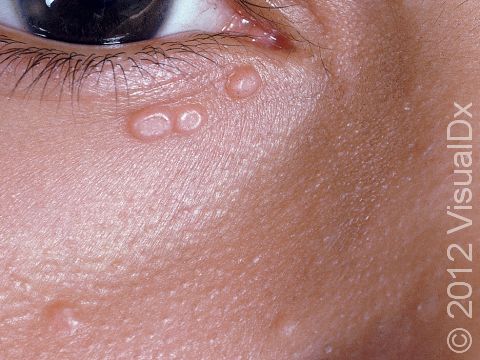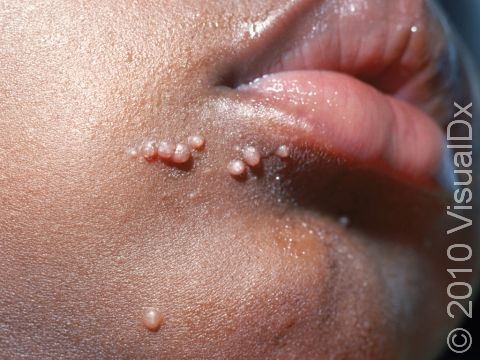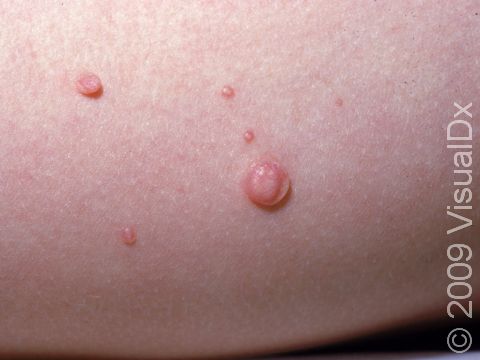Molluscum Contagiosum (Pediatric)
Molluscum contagiosum appears as small pearly, skin-colored, wart-like lesions on the body. It is caused by a common virus and is spread by direct contact with other affected children or adults, or by touching objects that have been handled by infected people. Molluscum contagiosum is painless and typically harmless; it usually disappears in 6-9 months on its own but could last for a few years. Children who are affected with molluscum contagiosum can spread the rash to other areas of their body by itching or rubbing the lesions.
Who's At Risk?
The typical age of children infected by molluscum contagiosum is 2-5 years, but infants may also be affected. The lesions may be anywhere on the body, but the face, eyelids, neck, underarms, and thighs are the most commonly affected areas. Infants with atopic dermatitis (eczema) may be more commonly affected by molluscum contagiosum.
Signs & Symptoms
One or more small (1-5 mm) pink, white, or skin-colored, smooth papules (solid bumps), often with a tiny dot or depression in the center, occur in clusters and sometimes in a straight line from scratching (self-inoculation). In darker skin colors, the lesions may appear skin-colored or purple. In individuals with an immune system deficiency, the bumps can be larger than a thumbnail.
Self-Care Guidelines
Care should be taken to avoid your baby scratching or rubbing the areas. Keep the area covered to avoid transmission of the virus, and avoid sharing clothing, towels, and bedding with others.
Treatments
Your baby’s clinician will assess the skin and make recommendations for treatment if lesions are spreading or increasing in number.
Visit Urgency
If you suspect that your baby has molluscum contagiosum, seek medical care.
References
Bolognia J, Schaffer JV, Cerroni L. Dermatology. 4th ed. Philadelphia, PA: Elsevier; 2018.
James WD, Elston D, Treat JR, Rosenbach MA. Andrew’s Diseases of the Skin. 13th ed. Philadelphia, PA: Elsevier; 2019.
Kang S, Amagai M, Bruckner AL, et al. Fitzpatrick’s Dermatology. 9th ed. New York, NY: McGraw-Hill Education; 2019.
Paller A, Mancini A. Paller and Mancini: Hurwitz Clinical Pediatric Dermatology. 6th ed. St. Louis, MO: Elsevier; 2022.
Last modified on May 16th, 2023 at 4:48 pm

Not sure what to look for?
Try our new Rash and Skin Condition Finder



